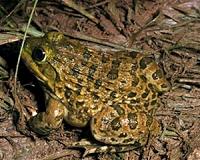 |
Warwick, England (UPI) Jul 28, 2010 Use of a particular genetically modified crop in India has produced massive gains in women's employment and income in that country, a U.K. research study says. Planting of insect-resistant Bacillus thuringiensis toxin cotton generated not only higher income for rural workers but also more employment, especially for hired female labor, a release from the University of Warwick in the United Kingdom said Wednesday. Since the genetically modified Bt cotton was introduced in India in 2002, higher yields compared with conventional cotton have led to additional labor employed to pick the increased production, Warwick's Arjunan Subramanian said. Harvesting of cotton is primarily a female activity in India, and women hired to pick Bt cotton have enjoyed a gain of 55 percent in average income, he said. Bt cotton also improved female working conditions since less family male labor was needed for scouting and spraying for pests, making that labor available for other household economic activities traditionally done by female family members. "Overall, Bt cotton enhances the quality of life of women through increasing income and reducing 'femanual' work," Subramanian said.
Share This Article With Planet Earth
Related Links Farming Today - Suppliers and Technology
 Goa's frog poachers feed taste for 'jumping chicken'
Goa's frog poachers feed taste for 'jumping chicken'Panaji, India (AFP) July 28, 2010 At night during the annual monsoon rains, hundreds of tropical villages in rural Goa come alive with the cacophony of croaking bullfrogs calling for mates after months in hibernation. But while lucky amphibians manage to attract a female consort, an unfortunate few fall prey to poachers who follow the distinctive mating calls to zero in on what they call "jumping chicken". Gearing up for ... read more |
|
| The content herein, unless otherwise known to be public domain, are Copyright 1995-2010 - SpaceDaily. AFP and UPI Wire Stories are copyright Agence France-Presse and United Press International. ESA Portal Reports are copyright European Space Agency. All NASA sourced material is public domain. Additional copyrights may apply in whole or part to other bona fide parties. Advertising does not imply endorsement,agreement or approval of any opinions, statements or information provided by SpaceDaily on any Web page published or hosted by SpaceDaily. Privacy Statement |